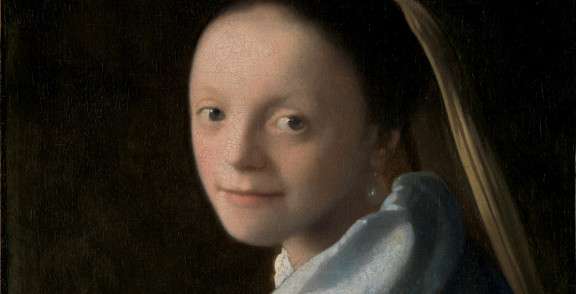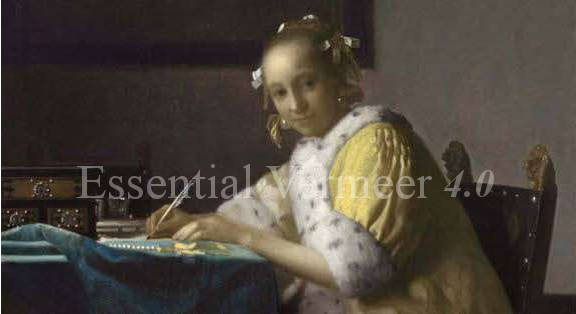Click here to access high quality images of Metsu's paintings.





Gabriel Metsu
(1629, Leiden–1667, Amsterdam)
Born at Leiden, in January 1629, son of the painter Jacques Metsu, under whom he probably first studied. He also studied with Dou. In 1648 he was a founder member of the guild in Leiden; he left c. 1650 for a time, but was resident again in 1652 and 1654. He may have visited Utrecht as he seems also to have been influenced by Utrecht artists, particularly Nicolaus Knüpfer and J.B. Weenix. By 1657 he had settled in Amsterdam where he lived on the Prinsengracht and where he was buried on 24 October, 1667. In Leiden he had painted some history subjects, but he came to specialize in genre scenes reflecting the influences of Maes and ter Borch and latterly of the Delft School. His technique evolved from the quite broadly painted Leiden works to the meticulous fijnschilder manner of his later Amsterdam years. He occasionally painted portraits and still lifes. One of his best-known works, The Sick Child (Rijksmuseum, Amsterdam), is often compared with Vermeer. His work is rarely dated, so his development and relationships with other artists are difficult to trace.
- Nicholas Maes
- Rembrandt van Rijn
- Jan Steen
- Michael Sweerts
According to Arnold Houbraken, Metsu was taught by Gerard Dou, though prior to about 1653 his influence is not apparent. One of his earliest pictures is The Rich Man and Lazarus at the Strasbourg Museum, painted under the influence of Jan Steen. Under the influence of Rembrandt he produced the Woman taken in Adultery, (1653) a large picture in the Louvre. To the same period belong the Dismissal of Hagar, in the Museum De Lakenhal, Leiden, and the Widow's Mite at the Schwerin Gallery.
Around 1653–1654, Metsu began placing his figures in domestic interiors and specialized in genre scenes on small panels. Old people were among Metsu's favorite thematic borrowings from Dou during his first years in Amsterdam. Metsu often painted young (single) women who either fed pets, sold goods at market (fruit, vegetables, fish, poultry, or meat), or were grocery-shopping themselves for these provisions. Another significant painting from this period was The Vegetable Market in Amsterdam, in the Louvre, for which the Encyclopædia Britannica Eleventh Edition praised ", the characteristic movement and action of the dramatis personae, the selection of faces, the expression and the gesture, and the texture of the things depicted".
Houbraken ends his biography with the comment that he was "of impeccable reputation", but he may have meant this ironically. Often, the subject of a Metsu painting was based on a popular emblem from an emblem book. This can give the painting a double meaning, such as in The Poultry Seller, 1662, showing an old man offering a rooster to a young girl in a symbolic pose that is based on a lewd engraving by Gillis van Breen (1595–1622), with the same scene. The accompanying verse is:
"Hoe duur dees vogel vogelaer?" "hy is vercocht" "waer?"
How much for the bird, birdman? It's sold. Where? "aen een waerdinne clear, die ick vogel tgeheele Jaer."
To an innkeeper, to whom I sell birds/that I have sex with the whole year through. — Gillis van Breen after C. Clock. De vogelverkoper (gravure). Rijksprentenkabinet, Amsterdam. The Sick Child in Rijksmuseum from c. 1664 "prompts the thought that Metsu strongly admired Vermeer's work. It also provides us with a hint about what he thought was lacking in Vermeer's paintings: emotional involvement of the viewer". This is in compliance with other painting, The Doctor's Visit, where there is emotional involvement in the painting of a tragic event involving the ill woman.
One of the finest collection of Metsu paintings was owned by Gerrit Braamcamp in the 18th century; he owned eight of them, including "man writing" and "woman reading a letter
expert opinion: Alejandro Vergara
In 1657 Metsu moved to Amsterdam where he spent the rest of his life and produced most of his important works. There he absorbed various different influences (one of his key qualities as an artist) which he synthesizes into a manner of painting which was both unique and of extremely high quality. Ter Borch is the artist who most influenced him at this point, as can be seen in his figure types, his manner of representing gestures and actions, and his subjects, some of which Metsu helped to popularize, such as the woman at her dressing-table. Also important during these years was Nicolaes Maes, who despite of being younger than Metsu, influenced his interest in market scenes and the subject of women giving alms to children.
As with Vermeer and other artists, it is difficult to establish a chronology far Metsu's work, as most of his paintings are not dated. Although it is difficult to decide on the origin of elements which Metsu shared with other artists, it seems clear that two of his finest works, Gentleman Writing a Letter and A Lady Reading a Letter of around 1665, are slightly later than similar paintings by Pieter de Hooch and Vermeer and are undoubtedly inspired by them. Thus, the spatial clarity of Metsu's paintings, the compositional importance of the end wall and the floor and the proliferation of geometrical forms which contribute to the unity of the scene are all qualities more associated with De Hooch and Vermeer than with Metsu himself. Around 1660 the artist developed a more individual approach in the choice of, subjects, evident in works such as the Sick Child (Amsterdam, Rijksmuseum), one of his most famous paintings.
from:
Alejandro Vergara
Vermeer and the Dutch Interior
Madrid, 2003, p.210









